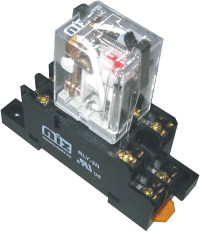I thought I had seen it all relating to cooking hoods and supression system shutdowns but this one is new to me. AHJ requires power to be shutdown to all electric cooking equipment on system discharge. This is normaly done with a shunt trip breaker.
Today I saw it done with a GFCI breaker, they brought the neutral and ECG to the cylinder control head and put the wires on the microswitch. On system trip the microswitch connects the neutral and ECG and the GFCI trips.
Now I know (or at least I think I know) that the GFCI is not listed to work in this manner but I still think it is a great idea for 1 reason. Normaly, with a shunt trip breaker you have the shunt power supply voltage in the microswitch head. Along with this voltage you may also have low voltage from the building fire alarm system on the next switch less than 1/4" away. Using the GFCI the only thing you have on the microswitch is a neutral and a ground, how can you get hurt or blow up a firealarm system with that?
What do you think, if a manfacturer got a listing for this type of function would you use it to eliminate line voltages in the microswitch cabinet?
I know you could power a shunt trip breaker and switch the neutral to get almost the same thing but I do not think code allows switching the neutral and besides that when the microswitch is open you still have a line voltage (in series with the shunt coil) in the cabinet.
Today I saw it done with a GFCI breaker, they brought the neutral and ECG to the cylinder control head and put the wires on the microswitch. On system trip the microswitch connects the neutral and ECG and the GFCI trips.
Now I know (or at least I think I know) that the GFCI is not listed to work in this manner but I still think it is a great idea for 1 reason. Normaly, with a shunt trip breaker you have the shunt power supply voltage in the microswitch head. Along with this voltage you may also have low voltage from the building fire alarm system on the next switch less than 1/4" away. Using the GFCI the only thing you have on the microswitch is a neutral and a ground, how can you get hurt or blow up a firealarm system with that?
What do you think, if a manfacturer got a listing for this type of function would you use it to eliminate line voltages in the microswitch cabinet?
I know you could power a shunt trip breaker and switch the neutral to get almost the same thing but I do not think code allows switching the neutral and besides that when the microswitch is open you still have a line voltage (in series with the shunt coil) in the cabinet.




